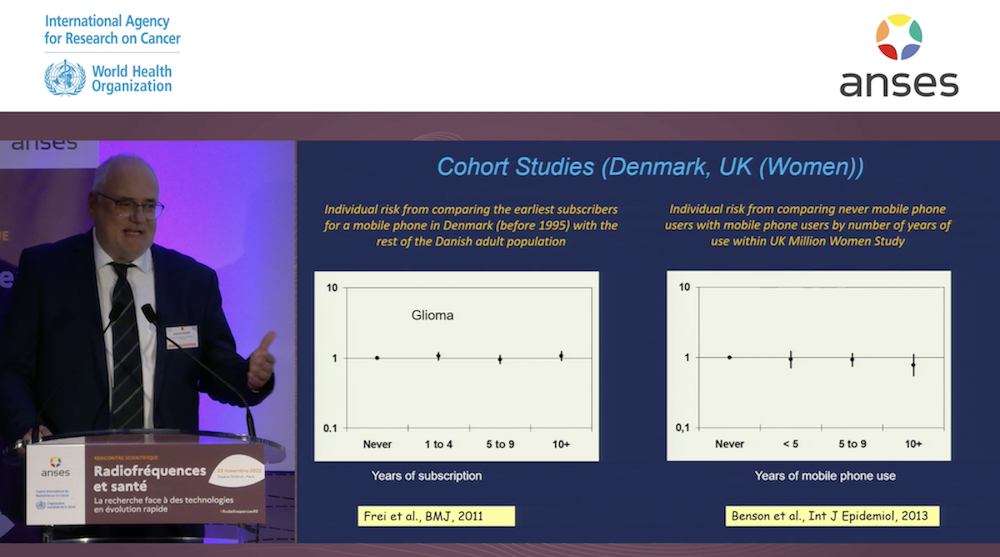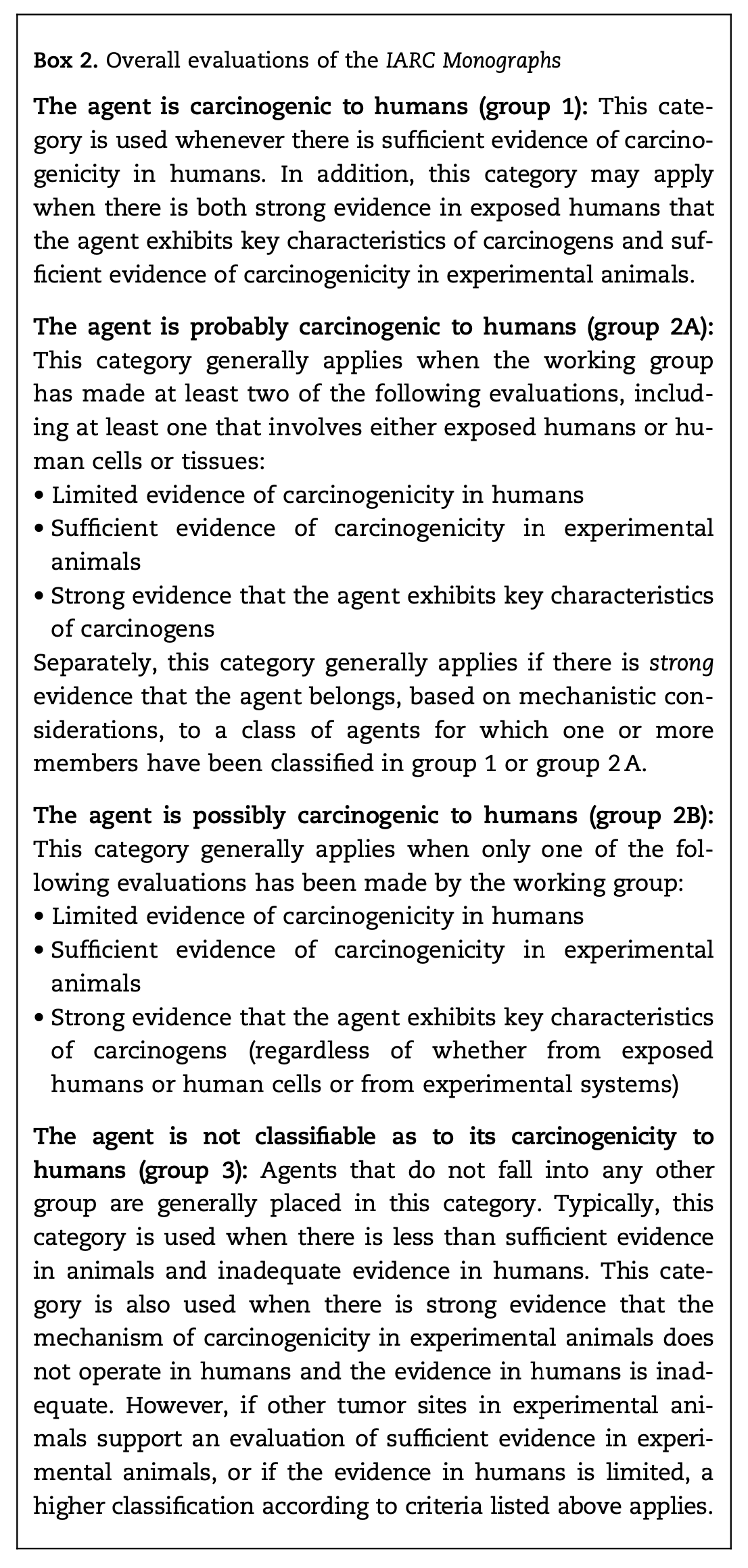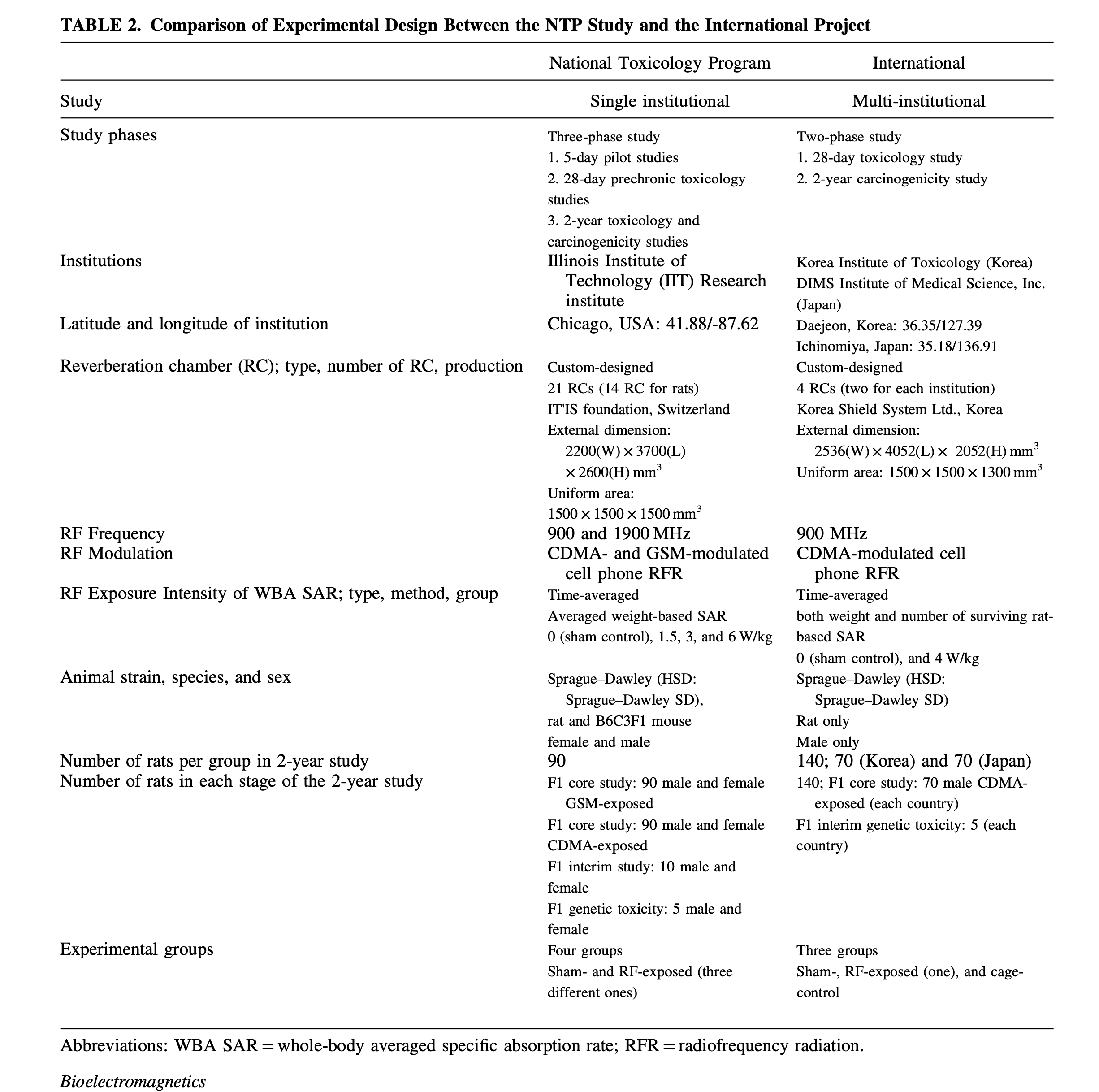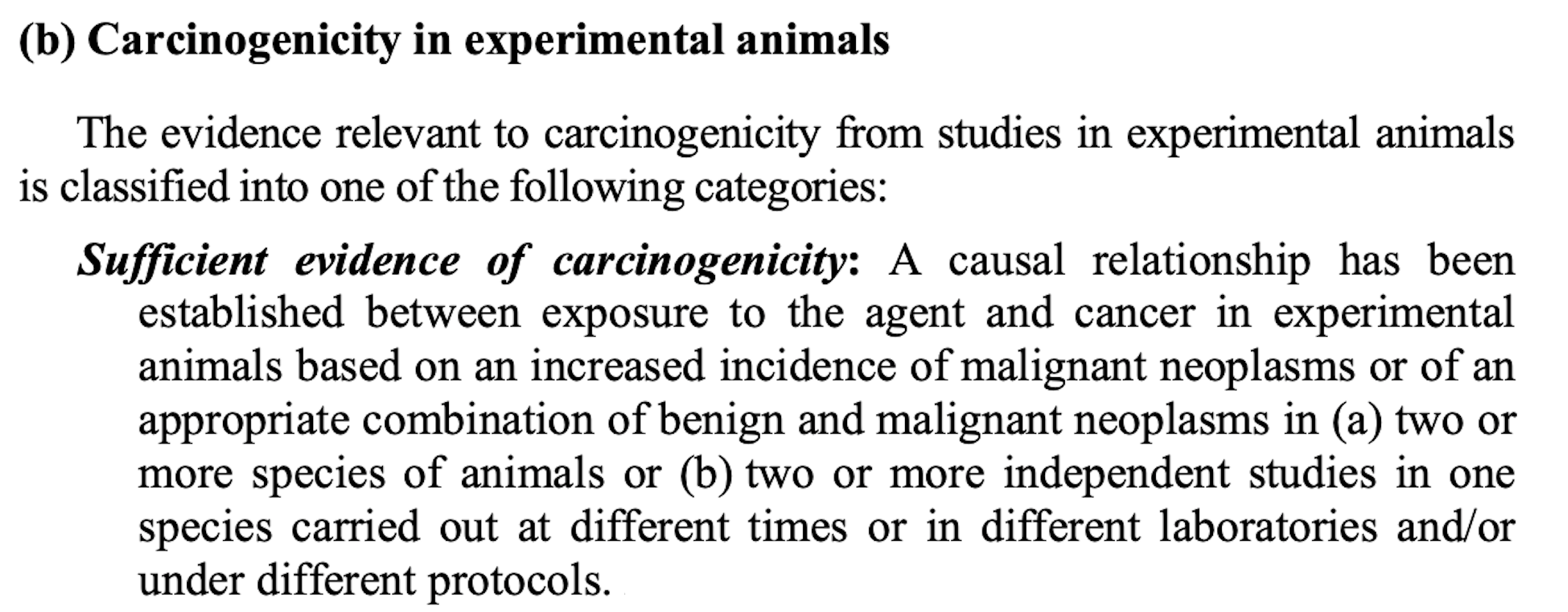On November 23, Elisabete Weiderpass, the Director of the International Agency for Research on Cancer (IARC), revealed that a new assessment of the evidence linking radiofrequency (RF) radiation to cancer would likely take place in early 2024. A formal decision could come within a few months.
Calls for a new IARC evaluation have been mounting for some years following the release of two large animal studies showing elevated tumor counts after lifelong exposure to RF radiation. Many believe that the animal experiments leave the Agency little choice but to increase the cancer risk classification at least one notch to “probable” from the current “possible,” or perhaps to its highest classification, a known human carcinogen.1
But, as Weiderpass made clear on making the announcement at a conference in Paris,2 the RF–cancer risk might instead be downgraded and the “possible” classification removed.
The stakes are high. RF health concerns have long been on the back burner, a situation made possible by industry-friendly exposure standards that discount cancer risk. An upgrade would most probably change all that. The ongoing siting of hundreds of thousands of new 5G antennas would add fuel to the fire.
This would be IARC’s second RF evaluation at what’s called a “Monograph Meeting,” a process widely considered the gold standard for classifying cancer risks from chemical and physical agents. The first was held in May 2011 when two dozen specialists from 14 countries agreed, almost unanimously, that RF is a Group 2B (possible) human carcinogen. Their detailed review of the literature was published in a 400+-page report, the 102nd volume in IARC’s Monographs Program.
In 2019, an IARC advisory group, taking a cue from the new animal data, urged the Agency to reassess RF radiation by 2024, calling it a “high priority.”3
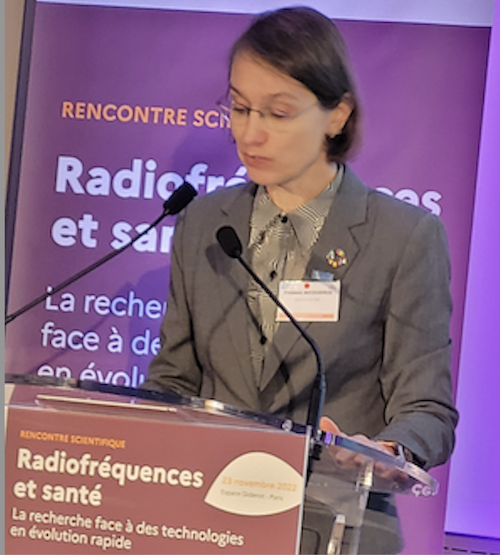 Elisabete Weiderpass at the podium in Paris
Elisabete Weiderpass at the podium in Paris
IARC had been silent on if and when it would schedule a new monograph meeting. Then Weiderpass made it appear all but certain. “I think it’s more likely that it will take place at the beginning of 2024” than in 2023, she said in Paris.
Yet, the following day, when asked by Microwave News for confirmation, Weiderpass demurred. In an email exchange, she would only say, “We have not yet scheduled a date for any reevaluation of RF-EMF exposure.”
Monograph meetings are planned a year in advance and are usually held in March, June and October. An early 2024 assessment would mean a declaration from IARC in the next few months —by March 2023.
Support for New Assessment
The animal studies driving the calls for a new monograph meeting were carried out by the U.S. National Toxicology Program (NTP) and the Ramazzini Institute in Bologna, Italy. Each was a multimillion-dollar effort taking more than a decade. In the end, they showed strikingly similar increases of a rare type of tumor in the heart.
The leaders of both projects anticipate a new assessment and an upgrade. In an April 2019 open letter to the Italian government, Linda Birnbaum, the former director of the NTP, predicted that an IARC reassessment “will certainly” raise the RF–cancer risk “to at least a ‘probable’ and possibly a ‘proven human carcinogen’.” Fiorella Belpoggi, the research director of the Ramazzini Institute, was one of the first to call for an upgrade.
In a recent email exchange, Birnbaum, now a scholar in residence at Duke University, reaffirmed those views. She said that she hoped —“absolutely”— that IARC would schedule a meeting in 2024.
Jonathan Samet, who served as the chairman of IARC’s first RF working group and is the dean of the Colorado School of Public Health, believes the time is right. “Given continued concern and the ambiguity of the 2B classification, another review seems warranted,” he told me last week. He too cited those “major” animal studies.
“It’s extremely important to have the IARC meeting, and the sooner the better,” Joel Moskowitz, the director of the Center for Family and Community Health at UC Berkeley Public Health, said in a telephone interview. Moskowitz, who runs the Electromagnetic Radiation Safety website, also signed the open letter to the Italian government.
Last year, Michèle Rivasi, a member of the European Parliament from France, called on IARC to take action. “It is time for IARC to reevaluate the impact of RF radiation on health,” she said. Rivasi was formerly a member of the Parliament’s Committee on the Environment, Public Health and Food Safety.
Others are less impressed by the animal work. For instance, members of ICNIRP, the International Commission on Non-Ionizing Radiation Protection, have concluded that the two studies are unconvincing and insufficient to revise exposure limits.
Still, Eric van Rongen, ICNIRP’s vice chair, told me that he would favor convening a new working group once the systematic reviews on RF and cancer commissioned by the World Health Organization (WHO) are completed. Van Rongen said he expects them to be ready “in a couple of months.” (More on the WHO systematic reviews here.)
Japanese-Korean ‘Validation’ Study
Weiderpass’s announcement came in reply to a question from the audience at the closing session of the Paris conference. But, right after she put March 2024 on IARC’s agenda, she left the door open for a possible delay.
Weiderpass cited two Asian studies which she was keen on having an RF working group review. “It’s very important for those results to be published before we can assess the literature,” she said, adding that they “are going to be published in two-to-four months.”
But here again, when Weiderpass was asked for confirmation, the timeline got hazy. Those studies “will not be ready in two-to-four months,” she told me by email, “but in a couple of years.”
Weiderpass closed our exchange by stating that IARC meetings are announced on its Monographs website: “I can give you no further details on when any meeting for RF-EMF would be scheduled,” she wrote.
In Paris, Weiderpass did not specify the upcoming Asian studies. She wants to wait for the International NTP Validation Project. The project, being run simultaneously in Japan and Korea, is a sharply scaled-down version of the original $30 million NTP experiment.4
The two-year RF exposures in Japan and Korea are scheduled to end before the end of the month. How long it will take to complete the data analysis and to write up the results is not clear, but one source said that a paper would probably not be published until 2024.
Is the Asian work sufficient to validate or invalidate the NTP results? I wanted to ask Michael Wyde, the current head of the ongoing NTP project and one of seven members of the Japanese-Korean international advisory committee. But he declined to be interviewed.
I turned to Ron Melnick, who was the lead designer of the NTP protocol. “I have too many concerns that need to be addressed before I would consider this project to represent a replica of the NTP study,” he told me from his home in Utah. Melnick, who retired from the NTP in 2009, was a member of the 2011 RF working group
Validation or not, “There’s no need to wait,” says Kurt Straif, the former head of the IARC Monograph Section. IARC’s guidebook for classifying cancer agents —known as the Preamble— is “crystal clear,” Straif told me via Zoom from Freiberg, Germany. “You don’t need further validation when you have two informative studies. They should be enough.”5 Straif helped run the 2011 RF meeting. He left IARC in late 2018 on reaching the mandatory retirement age and is now a research professor at Boston College.
Where Does Schüz Stand?
A key unknown is what Joachim Schüz thinks about assembling a new working group. Schüz is the head of IARC’s environment section and has spent much of his career doing EMF and RF epidemiology. There is little question that Weiderpass will seek his opinion about the meeting, as well as that of the head of the Monographs Program, Mary Schubauer-Berigan.
I asked Schüz where he stood on the meeting. He wouldn’t say.
Schüz makes no secret of his skepticism that RF can lead to cancer —this opinion has become stronger since 2011. He might endorse a meeting if he believes that the working group would remove the 2B label. Even so, he would likely ask Weiderpass to wait for both the Asian animal results and the WHO systematic reviews. (As a member of the IARC staff, Schüz could attend the working group meeting but would not have a vote.)
At last month’s meeting in Paris, Schüz presented an overview of the RF–cancer literature. The NTP and Ramazzini studies “confirmed” the “possibility” that RF radiation is carcinogenic, he said. He was far more dubious, however, about the Interphone and Lennart Hardell epidemiological studies, which showed relatively consistent increases in brain tumors among long-term cell phone users and were the basis for IARC’s 2B decision.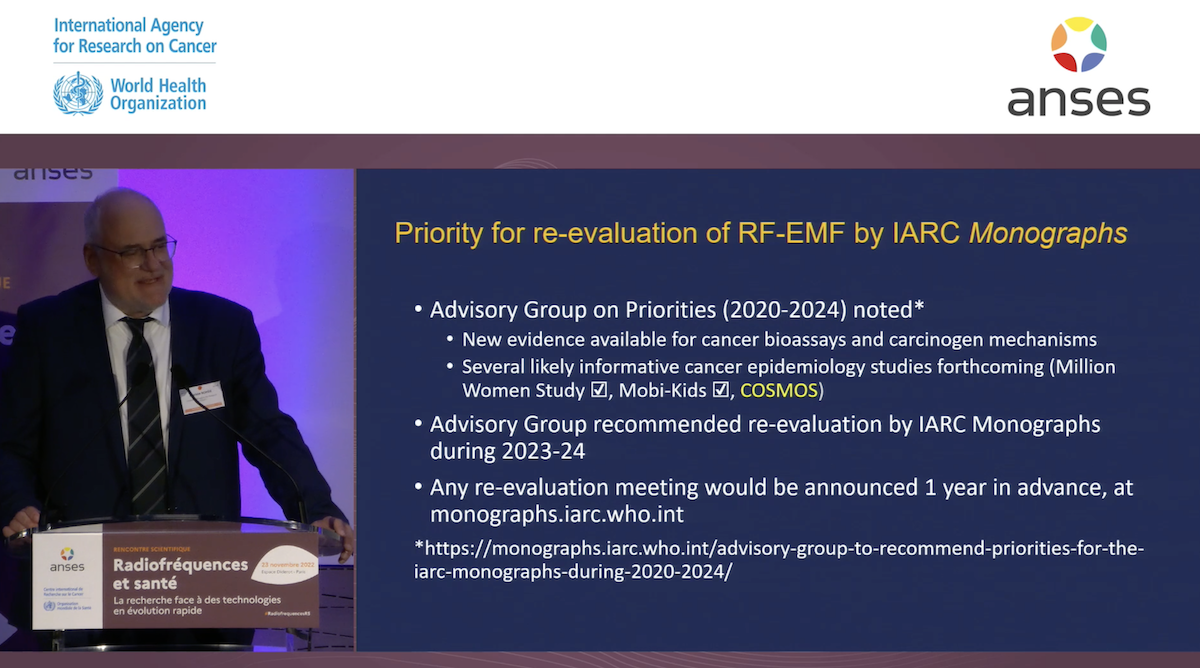
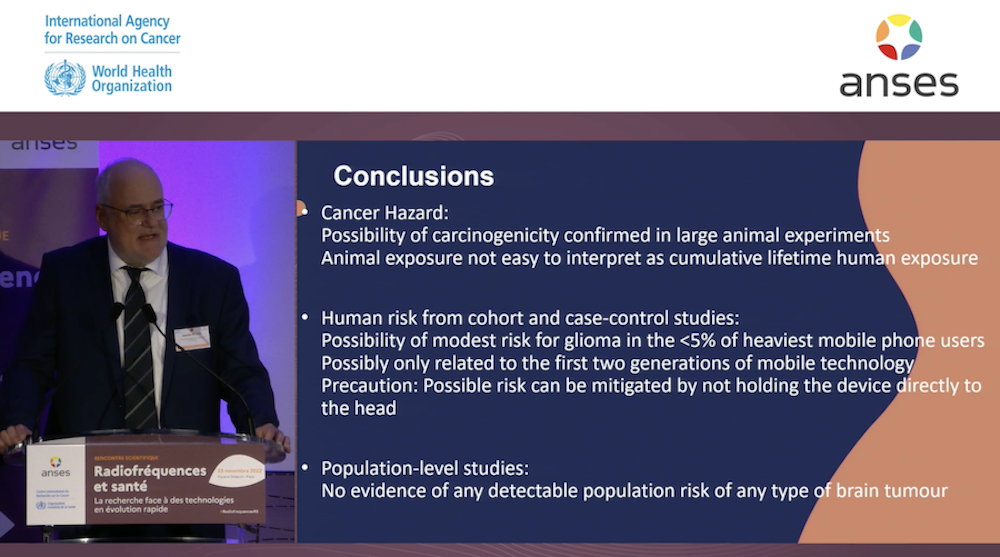 Joachim Schüz at the Paris conference
Joachim Schüz at the Paris conference
Schüz relies on two large cohort studies that show no apparent brain tumor risk: the Danish Cohort Study and the U.K. Million Women Study. He is a senior author on both. The problem with them is the dearth of exposure information. Their estimates of the cancer risk are based on the answers to just one or two questions about a decade or two of cell phone use.
The exposure assessment in the Danish Cohort Study is so unreliable that most other epidemiologists consider the results to be meaningless.6 Those on the 2011 IARC working group judged it uninformative and set it aside. They ignored it. The flaws are structural, and no amount of refined analysis can resolve them.
One critic wondered aloud how Schüz can discount the failings of the cohort studies and, in the next sentence, stress the potential biases of the Interphone and Hardell case-control studies.
When will Director Weiderpass schedule a second RF working group meeting? We’ll find out soon.
__________________________
1. Details of the IARC cancer classifications from J. Samet, et al., Journal of the National Cancer Institute (JNCI), Vol.112, p.36, 2020 (open access).
2. Videos of the talks and exchanges at the Paris meeting are available in both French and in English.
3. Report of the Advisory Group to Recommend Priorities for the IARC Monographs During 2020-2024, pp.148-149. A brief summary was published in Lancet Oncology.
4. The Japanese-Korean project is exposing only male rats. (The NTP found the most significant effects among male rats.) It’s also using only one carrier frequency (900 MHz) with one type of modulation (CDMA). NTP used both 900 MHz and 1.9 GHz radiation, each with both CDMA or GSM modulation. Some have dubbed the Asian project “NTP-Lite.” Below is a side-by-side comparison of the two projects from Y.H. Ahn et al., Bioelectromagnetics, Vol.43, p.221, 2022 (open access).
5. The 2019 Preamble to IARC Monographs on the Identification of Carcinogenic Hazards to Humans states (p.32):
6. The exposure assessment in the U.K. Women’s study has also come under fire. See Joel Moskowitz’s critique in JNCI.
https://microwavenews.com/news-center/iarc-2nd-rf-monograph-meeting
Spread the word:
- Click to share on Facebook (Opens in new window)
- Click to share on Twitter (Opens in new window)
- Click to share on WhatsApp (Opens in new window)
- Click to share on LinkedIn (Opens in new window)
- Click to share on Pinterest (Opens in new window)
- Click to share on Reddit (Opens in new window)
- Click to share on Tumblr (Opens in new window)
- Click to share on Telegram (Opens in new window)
- Click to print (Opens in new window)

